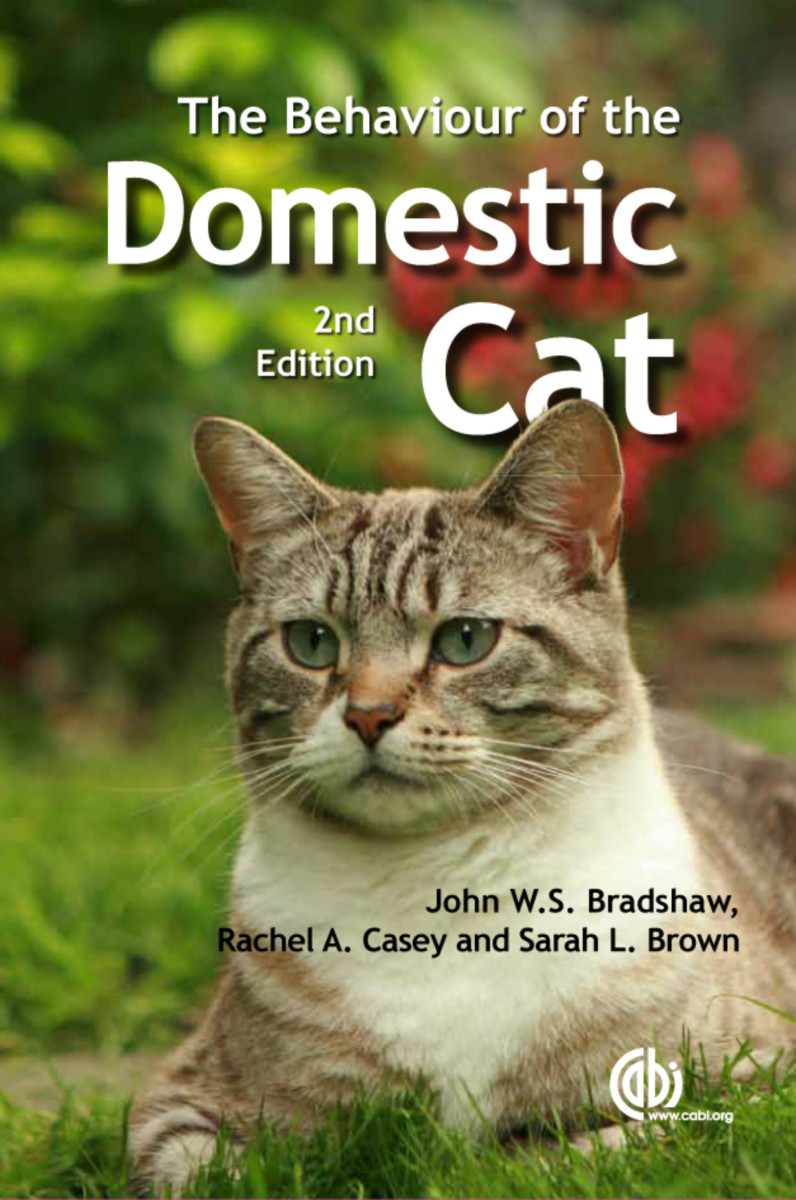The Behaviour of the Domestic Cat Edition 2
- Publisher
CABI - Published
9th January 2013 - ISBN 9781845939922
- Language English
- Pages 264 pp.
- Size 6.875" x 9.75"
- Images 56 illus
Describing feline behavior from both a mechanistic and functional approach, this textbook provides an accessible overview of this fascinating subject. The book begins by addressing physiological, developmental and psychological aspects, with chapters on domestication, the development of the senses, learning, communication and feeding behavior. The authors then build on this foundation to discuss social behavior, hunting and predation, cat-human interactions and welfare. Fully updated throughout, this new edition also includes two new chapters on behavioral disorders due to pathologies and from misdirected natural behavior.
"Despite a close, long-standing affiliation with humans, the domesticated cat remains an essential predator. The principal key to understanding the cat's behavioral repertoire is recognition of the fact that most of it derives from the cat's ancestral roots as a solitary hunter. The authors discuss behavior in the context of underlying neutral and sensory physiology. They also address developmental aspects of behavior, including socialization and the influence of kitten playfulness on subsequent adult behavior. The book briefly considers select behavioral problems in relation to disease states and to the complex social systems of cats. The latter, while typically appearing in multi-cat households, are often not appreciated by pet owners. This well-written, interesting book provides a great deal of information about the underlying mechanisms of behavior in domestic cats. The updated edition (1st ed., 1992) will be a valuable resource for anyone interested in the study of ethology. Summing Up: Highly recommended."
A. Brass, independent scholar - Choice
1. The Cat: Domestication and Biology
2. Sensory Abilities
3. Mechanisms of Behaviour
4. Behavioural Development
5. Communication
6. Feeding Behaviour
7. Hunting and Predation
8. Social Behaviour
9. The Cat-Human Relationship
10. Cat Welfare
11. Undesired Behaviour in the Domestic Cat
12. Physiological and Pathological Causes of Behavioural Change
John W. S. Bradshaw
John W. S. Bradshaw is a Visiting Fellow and Director of the Anthrozoology Institute at the University of Bristol, where he was formerly Reader in Companion Animal Behavior and University Research Theme Leader for Animal Welfare & Behavior. His main research interests are in the behavior and welfare of domestic cats and dogs, and their relationships with people; he has published over 100 research papers and book chapters on these topics. Since 2009 he has focused his attention on the dissemination of animal welfare science to pet owners: his book Dog Sense/In Defence of Dogs was a non-fiction bestseller in both the UK and USA in 2011, and has been translated into nine other languages. He was one of the founders of the International Society for Anthrozoology (ISAZ), and has been a member of the Council of the Association for the Study of Animal Behaviour (ASAB) and set up its Accreditation Committee (1999-present).
Author Website
Sarah L. Brown
Sarah L. Brown teaches at the University of Southampton.
Rachel Casey
Rachel is Director of Canine Behavior and Research at Dogs Trust, the UK’s largest dog charity. She is a RCVS and an EBVS® European Veterinary Specialist in Behavioral Medicine and an EBVS® European Veterinary Specialist in Animal Welfare, Science, Ethics and Law. She has research interests in canine welfare science, including identification of risk factors for undesired behaviors. Rachel also oversees community programs aimed at preventing behavior problems, and the behavioral rehabilitation of dogs in rehoming centers.


